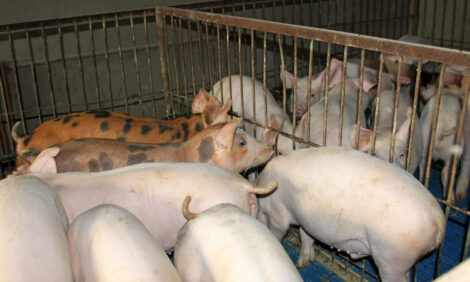



Market Preview: The China Connection
US - Weekly U.S. Market Preview w/e 31st August, provided by Steve R. Meyer, Ph.D., Paragon Economics, Inc.Smithfield's announcement of the sale of 60 million pounds of pork to China last Friday was welcome news for the U.S. pork industry. After several months of rumors about Chinese interest in U.S. pork and several weeks of discussion indicating their wishes to restrict pork from hogs fed ractopamine, it was good to finally get solid news of a shipment. We hope it will be the first of several over the next few months as China tries to provide pork to its consumers in the wake of large death losses in its domestic herd.
But just how big is this sale? 60 million pounds sounds like a lot of pork, but consider the following facts:
- 60 million pounds amounts to 29,956 tons and that amount will be shipped between now and the end of the year.
- 60 million pounds represents roughly 15% of one week's U.S. carcass-weight pork production at present, and will represent about 13% of the likely peak weekly production this fall of around 460 million pounds.
- 7,480 tons/month will be about 70% of a recent monthly total for shipments to China/Hong Kong (see Figure 1), but only about 18% of July shipments to Japan.
- This shipment could be filled by three-fourths of one day's normal slaughter, assuming that China buys cuts in the same proportion that they are produced. We don't think that is likely since China will want to stretch limited dollars over as much product as possible.

China's ban on ractopamine is certainly an obstacle for other packers to overcome. We are confident that Smithfield's vertically integrated structure made it easier for them to meet this demand, but we also believe that other packers will follow Smithfield's lead if there is more business to be had.
I think segregating ractopamine hogs and maintaining product identity is a bigger issue that the availability of ractopamine-free hogs. Many producers pull one or two loads of hogs from a barn before they put ractopamine into diets, so there are hogs out there to meet the Chinese demands. The trick is getting them grouped into one day's (or a portion of one day's) slaughter operations and then maintaining the identity of that product through the plant. Again, Smithfield may be in a better position to do that because of their ownership of pigs but other packers will figure it out quickly if there is a buck to be made.
Could this be a dry run for mandatory country-of-origin labeling (MCOOL)? I think so. The operational issues appear to be much the same. It will be interesting to see how much the "ractopamine-free" methods actually cost.
Domestic Demand Shows Signs of Strength
While the China business has hopefully kick-started export business, the news for domestic demand through July was much more positive. Professor Glenn Grimes' demand index calculations for January-July show a 1.4% improvement in U.S. consumer-level pork demand in just one month. That is a very large jump in this index and it mainly reflects record-high retail pork prices. The indexes for beef and chicken improved as well in July, with chicken demand increasing by 2.1% from June. Indexes for all three species appear in Figure 2.

July's average retail pork price of $2.936/retail weight pound was 3.3% higher than last July. The price increase was good for both packers and producers as the farm-wholesale spread grew by 2.6% and producer prices were nearly 7% higher.
We think this recent jump in retail prices and, consequently, the demand indexes is a lagged impact of what has been happening since late winter. Wholesale pork demand has been very strong for much of this year in spite of soft exports and what appeared to be very soft consumer demand. We are pretty confident that the time lag of USDA's retail price series was the real reason for the difference. We think the same was true for chicken. It appears the data have now caught up with reality.
U.S. hog slaughter resumed its growth last week, increasing 3% from the same week last year (see this week's North American Pork Industry Data table below). It appears that USDA's July inventory of market hogs was low but not by a large amount. The culprit in comparing this year's data to last year's is an increase in market hog imports from Canada -- 165,000 more from June 3 through Aug. 26.
The June report suggested that slaughter from July 1 through last week should have been 2.1% higher than last year. That actual figure was 3.2%, but the larger numbers of Canadian market hogs account for over half of the difference. The larger number of Canadian feeder pigs imported up to June 1 would have been included in the June 1 inventories. Deducting the Canadian pigs leaves adjusted slaughter +2.5% for June 3 through last week; not much larger than USDA's predicted 2.1%! Let's hope it stays that close through fall.









